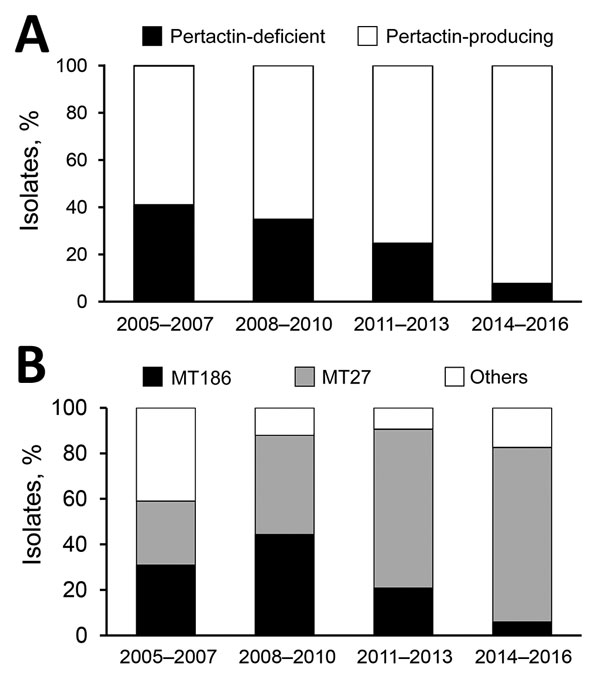Volume 23, Number 4—April 2017
Dispatch
Significant Decrease in Pertactin-Deficient Bordetella pertussis Isolates, Japan
Figure

Figure. Temporal trends in the frequency of pertactin-deficient isolates and changes in multi-locus variable-number tandem repeat analysis types (MTs) in the Bordetella pertussis population in Japan. Pertactin production (A) and MTs (B) were analyzed for 232 B. pertussis isolates collected from January 2005 through June 2016. The frequencies of pertactin-deficient isolates and 2 major MTs (MT27 and MT186) are shown by time period. For convenience, minor MTs (MT194, MT224–226, and MT314–316) are included as “others.”
Page created: March 16, 2017
Page updated: March 16, 2017
Page reviewed: March 16, 2017
The conclusions, findings, and opinions expressed by authors contributing to this journal do not necessarily reflect the official position of the U.S. Department of Health and Human Services, the Public Health Service, the Centers for Disease Control and Prevention, or the authors' affiliated institutions. Use of trade names is for identification only and does not imply endorsement by any of the groups named above.